Between September 1944 and June 1949 – when John Lancelot Burn set in motion the first slum clearance programme after the Second World War – Salford undertook its first post-war housing scheme. The 1950s to 1970s slum clearance programme consisted in the first instance of the demolition of houses so that new houses could be built. The 1940s housing-scheme focussed on building housing quickly to alleviate the intense housing shortage. This shortage was particularly acute after the end of the war when returning servicemen needed accommodation; in April 1949 the Salford City Reporter stated that enquiries for housing were made every 15 mins at Salford Housing Department. As a result, Salford opted, as did many municipalities at the time, to build temporary and prefabricated houses as well as permanent ones.
The maps in this blog post locate housing schemes that were announced, built, or that were in the process of being built between 1944 and 1949. It is a tool that helps to understand the scale of housing schemes and in which parts of Salford these were located. The information in this post relies heavily on newspaper articles in the Salford City Reporter that Roy Bullock collated in his book Salford 1940-1965 and on my accurately identifying estates and houses on the ordinance map of 1950. Further research in, for example, consulting City Council minutes, is needed so that the maps below should not be expected to provide a comprehensive or fully accurate account of housing built during that time – yet. It is work in progress.
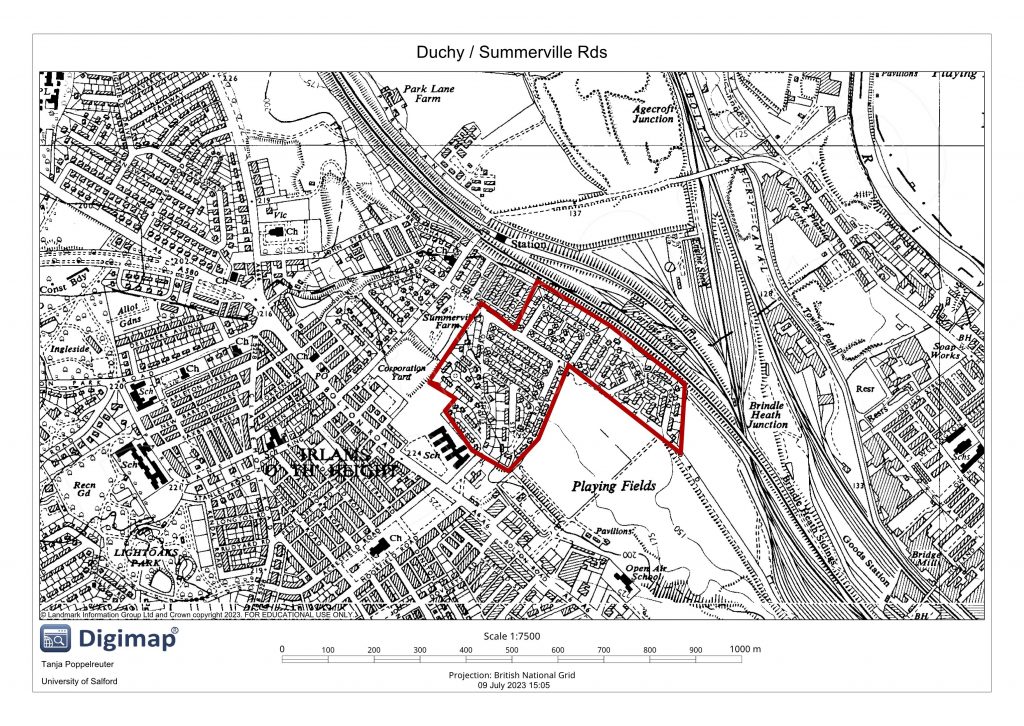
The largest permanent estate was built between 1944 and 1949. It was framed by Duchy and Summerville Roads in Irlam. 206 houses were planned in 1944. On a smaller site in Little Bolton 234 municipal flats were announced in 1948 to be built in between Ladywell Hospital and Stott Lane. The “Ladywell flats” seemed to have been completed by 1950 as they are clearly visible on the map. The Regent Road estate, where in 1948 82 houses and blocks of flats were planned, was another permanent housing scheme under development at this time.
The Wardleworth Estate with 188 planned houses was in 1946 reportedly planned on a 14 acre plot between Stott Lane and Tootal Drive. However, on the 1950 map this site is not occupied with houses. The website Digital Salford on the other hand has an image of houses built in 1946. It is titled “Wardleworth estate” and located on Eccles Old Road. Unfortunately, I could not readily identify an estate on Eccles Old Road on the map that followed the layout indicated on this photo and have yet to find Wardleworth estate on the map.
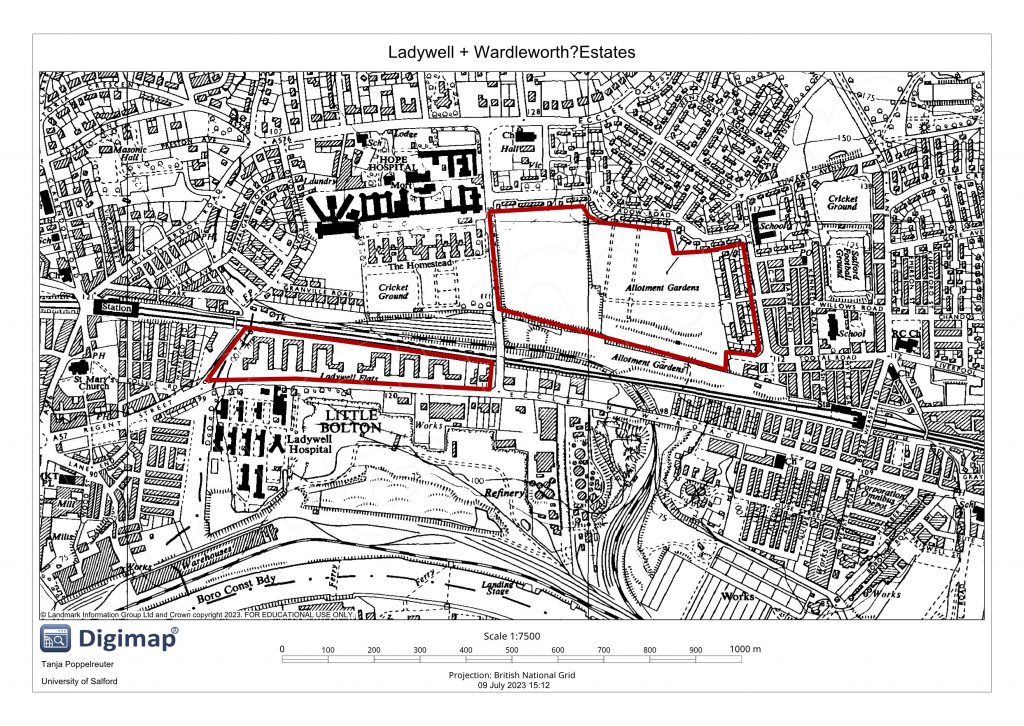
In addition to these permanent estates, several temporary and prefabricated ones were built as well. The largest temporary estate was announced in 1945 for a site bounded by Weaste Lane, Gore Avenue and Derby Road. Further temporary houses were to be built on two sites off Eccles New Road. The first site is easy to identify between Weaste Lane, Gore Avenue and Derby Road but again, where on Eccles New Road such temporary houses were built is difficult to see.
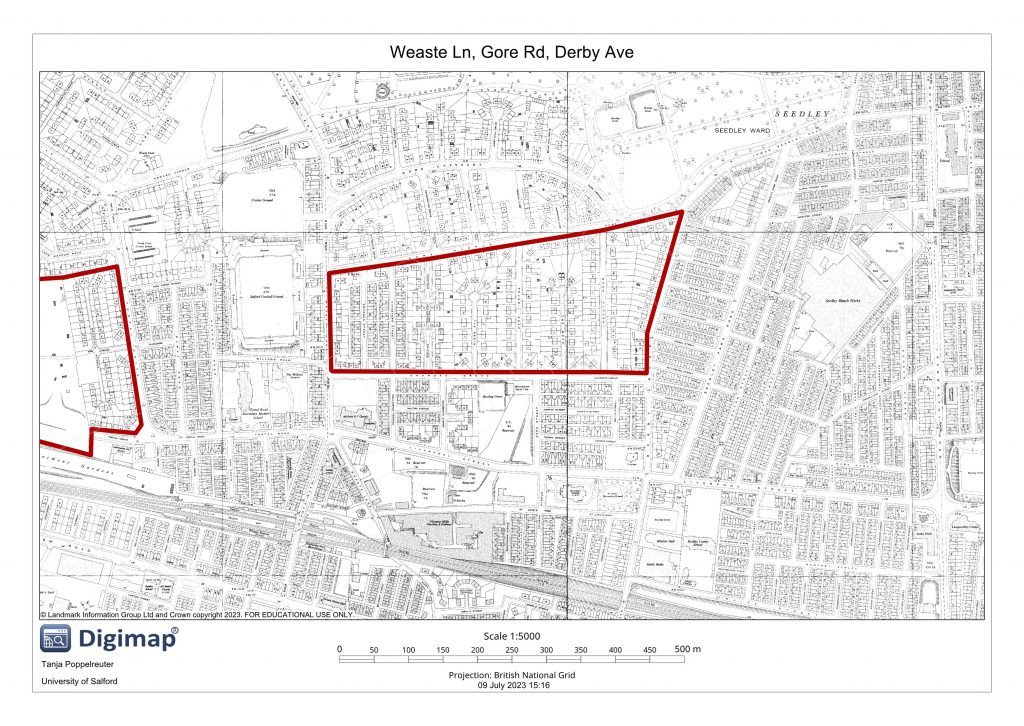
The first temporary houses that were opened were eight houses on London Street, Pendleton in 1945. At the same time, further ‘prefabs’ were announced to be built on Goodiers Lane, Cook Street, Withycombe Street, Pendleton, on Cumberland Street in Broughton and on Gray Street, Weaste.
The ones on Withycombe Street, and Goodiers Lane seem to be apparent on the map. Where on Cook Street (Trinity Ward?), Gray Street, or Cumberland Street such houses were built, is not clearly visible on the map.
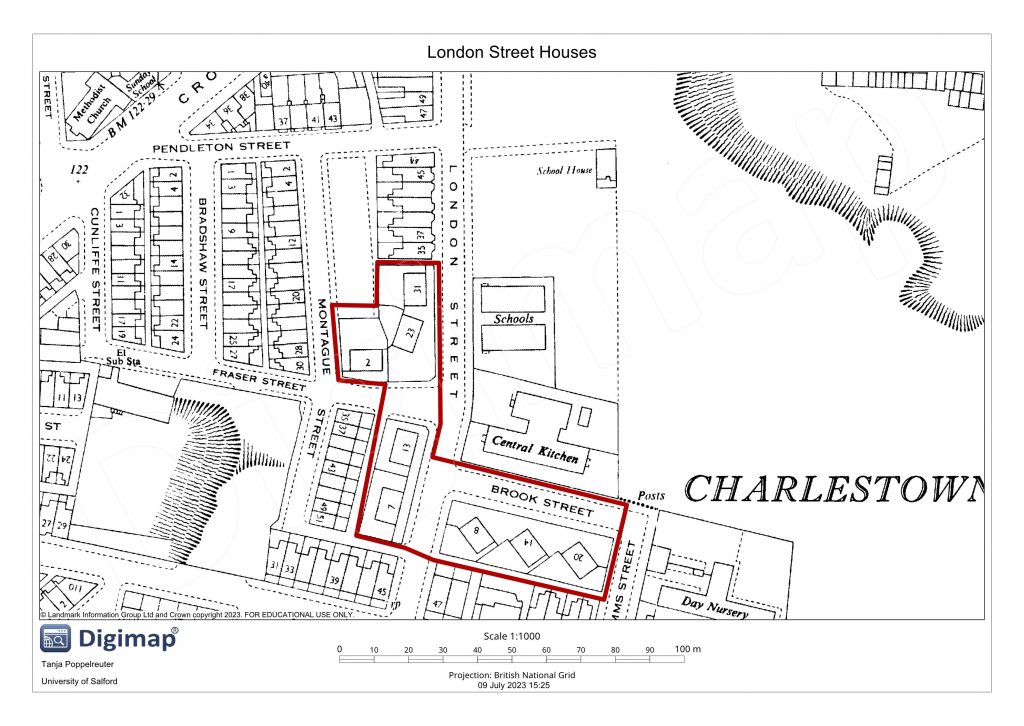
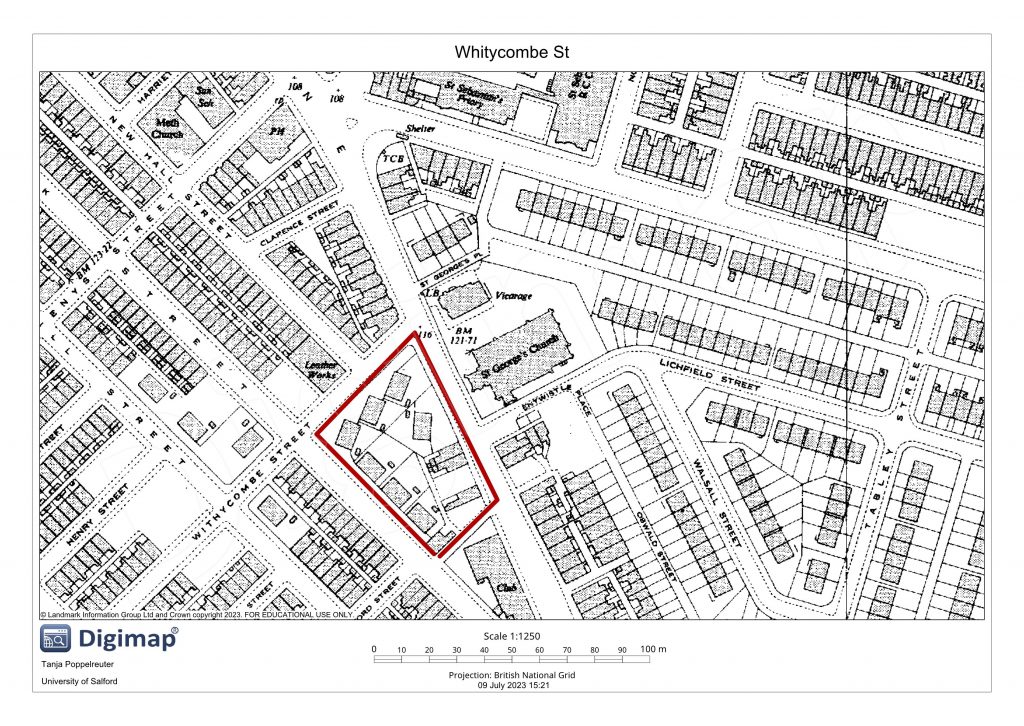
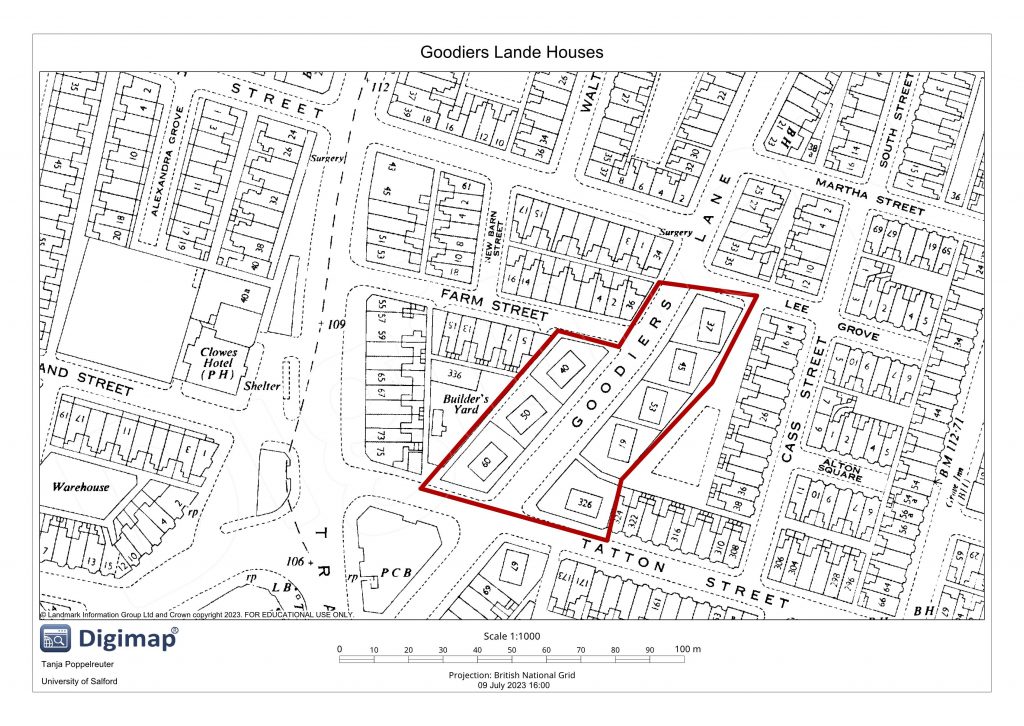

In 1949, finally, Salford Housing Ltd. announced the building of maisonettes as part of the extension of the Salford Brow Estate at Strangeways. Because no street name was provided in the article, I was unable to find the estate on the map as well.
This outline of permanent and temporary estates and houses in Salford built or announced between 1944 and 1949 is probably far from complete – I welcome any comments that help me to produce a more comprehensive map. Corrections, additions, photographs of these houses and estates, as well as recollections on living there would be more than welcome. Because I am planning to produce additional maps of this kind, any information about later developments (1950s, 60s and 70s) would be also very welcome.

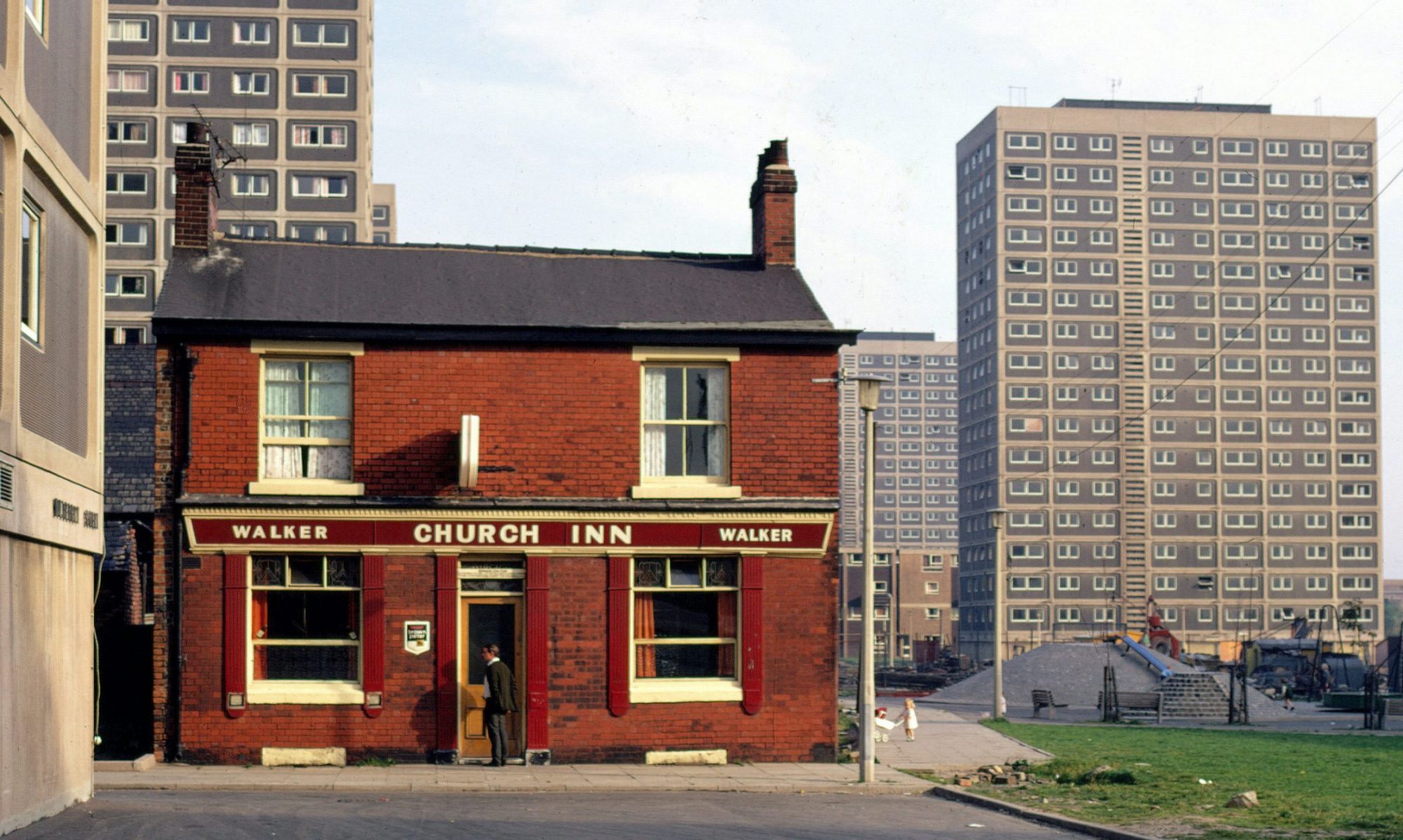
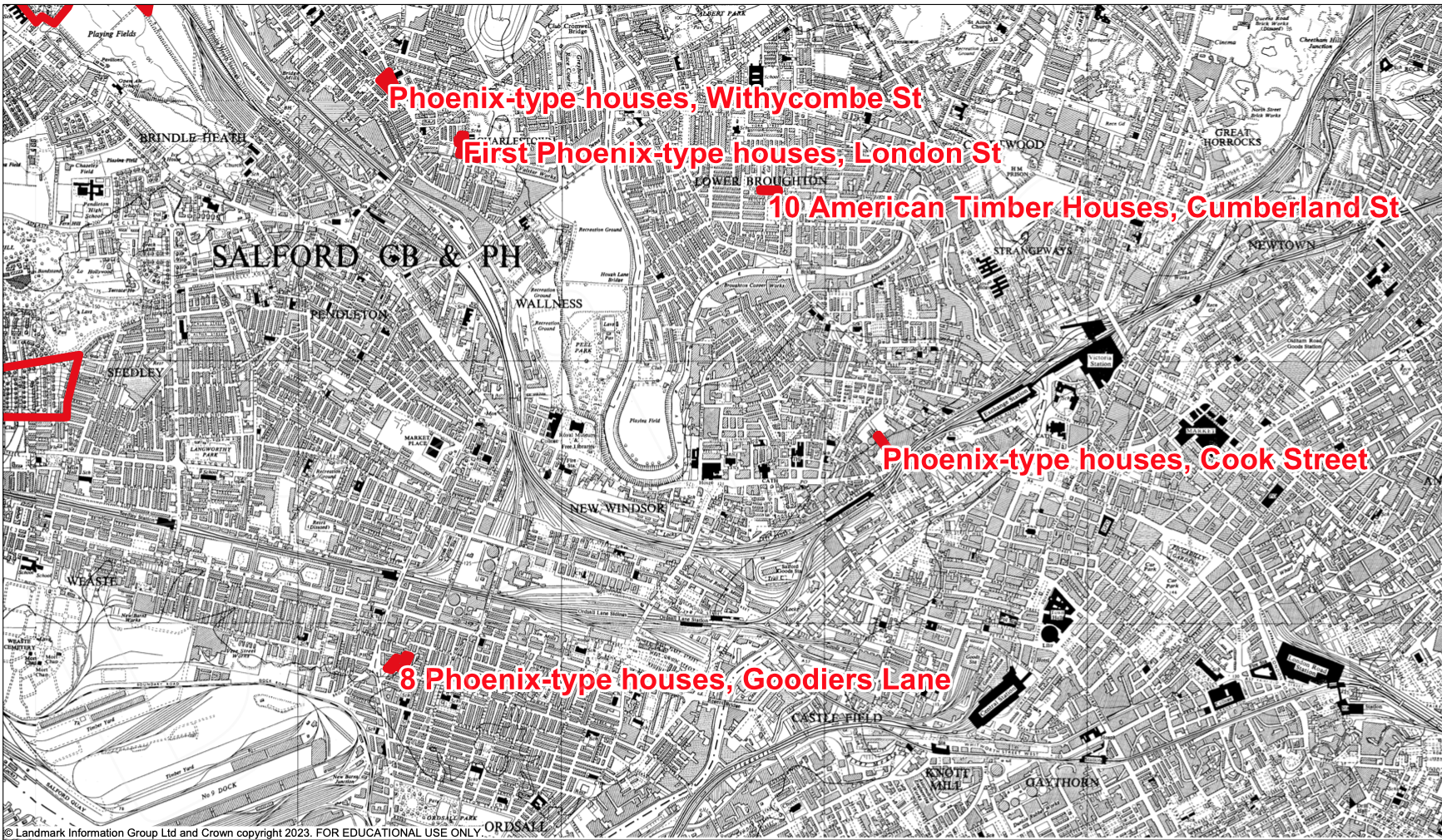
As a Salfordian with a keen interest in history I always find these articles of interest. You ask about the missing ‘Wardleworth’ estate. I don’t know if this is what you are looking for but an estate of that kind of age was built on the other side of Eccles Old Road. Look for Fairhope Ave on the North side of Eccles Old Rd, east of Lancaster Rd.
Hi TFH, Thank you for your comment and support. I will have a look and amend my map accordingly. I am glad that you like our posts!